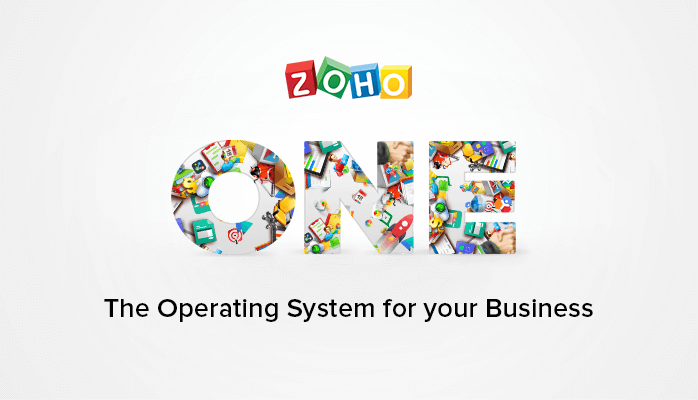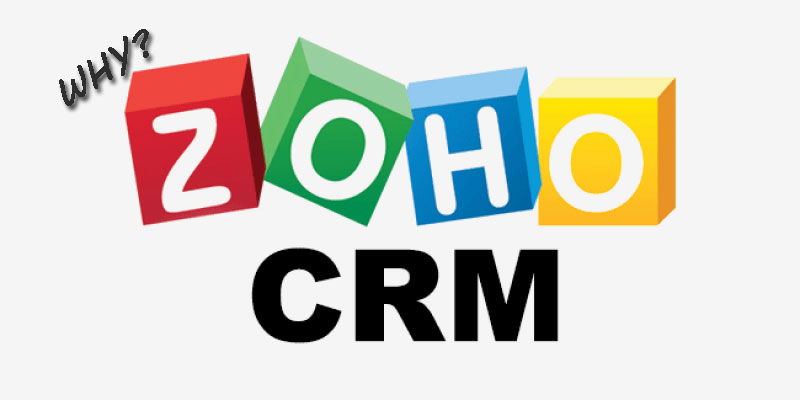ZOHO CRM

Zoho One is a broad and cohesive set of applications that work collectively to run an entire business on the cloud. It includes more than 35 web applications and an equal number of mobile apps—under a single sign-on, with centralized administration and provisioning—making it a true operating system for any business. While each application punches above its weight against the competition, collectively they deliver a knockout punch.
One has been a vision more than ten years in the making. It provided the logic for the panoply of business apps we've been building over this time. We were busy planting trees; now, you see the entire forest. You could even say that it's been our life's work and testament.
With Zoho One, we've put together all the applications a company needs to acquire and serve its customers (marketing, sales, and support apps); run its operations (finance, recruiting, and HR apps); and provide all the tools for its employees to work collaboratively and get their work done (office suite, mail, personal productivity, and collaboration apps). Almost any company has these same needs. With Creator, our drag-and-drop app builder, customers can even build custom apps for unique business needs—like logistics scheduling—and put them under the same umbrella that forms the single operating system for their business.
It's all on the web and on your mobile, so your business is accessible wherever you go.
Incredible Technology at an Impossible Price
So what does all this magic cost? If you have a drum, this is the time to set it rolling...
Zoho One is available at $30 a month—or just about a dollar a day, per employee. International prices are very similar. You must get a license for each one of your employees. At this price, we just made sophisticated business software available for everyone. Software is no longer a scarce resource that must be rationed and apportioned. It's more like a utility that anyone simply must have. Like electric power, you can just put it on every desk.
There are no catches. No ifs. No buts. No nickels. No dimes. No forced multi-year contracts. You get the enterprise—or high-end—editions of every application, thus all the capabilities you will likely ever need. There are no hidden prices, wily clauses, or sneaky upgrades. You get everything you need to run your business at that one price.
Zoho One really is a license for your peace of mind. Stop worrying about software. Or about breaking the bank to pay for it. Instead, go ahead and build your dream.
We Have Expert Consultants!!

When your data is organized and managed by a CRM platform, you have a more comprehensive understanding of your customers, which, in turn, leads to more aligned messaging. Many activities (both behind-the-scenes and direct interactions) can be digitized and automated, which helps you target your marketing efforts, speed sales cycles, and deliver better, more efficient customer service. Finally, with a fully integrated CRM, data silos are removed, making cross-departmental collaboration easy so that you can present a united front to customers.
It provides a centralized platform for sales teams to manage customer interactions and prioritize activities so that no customer feels ignored, thereby boosting their customer experience (CX).
CRM software is one of the most important sales tools in sales reps’ arsenal. It is more than a contact management system. If used to its full capacity, a CRM allows sales reps to spend more time with customers and potential customers. The more time spent with customers, the more deals are closed, and the more loyal customers remain.
Open new marketing avenues and manage incoming leads properly.
By intelligently storing and managing your customers’ information, a CRM system increases the number of leads coming in, helping your marketing team find new customers faster. It supports your sales teams in closing more deals faster. It also enhances customer service. For example, by adding customer data to your customer service software, contact center agents are better able to meet the customers' needs in a more engaging, productive, and efficient manner.
Signs that you need a CRM tool
Sales are slipping. Customers are leaving. Growth is stagnating.
- Sales is a struggle
- Customer profiles are difficult to build
- Customer service is not good
- Marketing and sales departments aren't collaborating
- High-value accounts are unknown
- Contacts within an account cannot be identified
- Customer data is incomplete or inaccurate
- Forecasting and reporting is difficult
We Have Expert Consultants!!

What do by ZOHO?
- Lead Management (sort, analyze, and prioritize)
- Provides a unified view of customers
- Better collaboration across Marketing, sales and other service teams
- AI-enabled sales and marketing tools
- Score leads to automatically prioritize quality marketing qualified leads (MQLs) and sales opportunities.
- Uses machine learning to examine data around each sales opportunity to forecast the likelihood of an early close date.
- Leverage digital assistants, chatbots, and other automated messaging systems to handle simple customer inquiries such as order status and payments due.
- Uses machine learning to automatically predict the best-performing mix of send time and channel for each customer based on their interaction history, profile and content metadata.
- Use AI-curated data and machine learning to create an ideal customer profile that can be used to identify lookalike sales opportunities.
- Align business processors between all teams
- Customer Categorization
- Manage complete and up-to-date contact information
- Forecasting and reporting
- Digital assistants/chatbots to handle low-urgency, high-volume questions and route cases to the right agents
- Knowledge management tools to help agents answer questions and can be used for customer self-service assistance
- A variety of digital customer service tools including live chat, video chat, telephony, and cobrowse functionality that allows customers to interact with your customer service team how and when they want
We Have Expert Consultants!!
Bronze Service
£1500
Remote DRG
Basic workflow Customization
5 email Templates
5 Reports
Basic user training
1 Month free online support
Silver Service
£3000
Remote DRG
Intermediate workflow Customization
10 email Templates
10 Reports
Basic user training
3 Months free online support
Gold Service
£9000
Onsite DRG
Advance workflow Customization
20 email Templates
15 Reports
Basic user training
6 Months free online support

